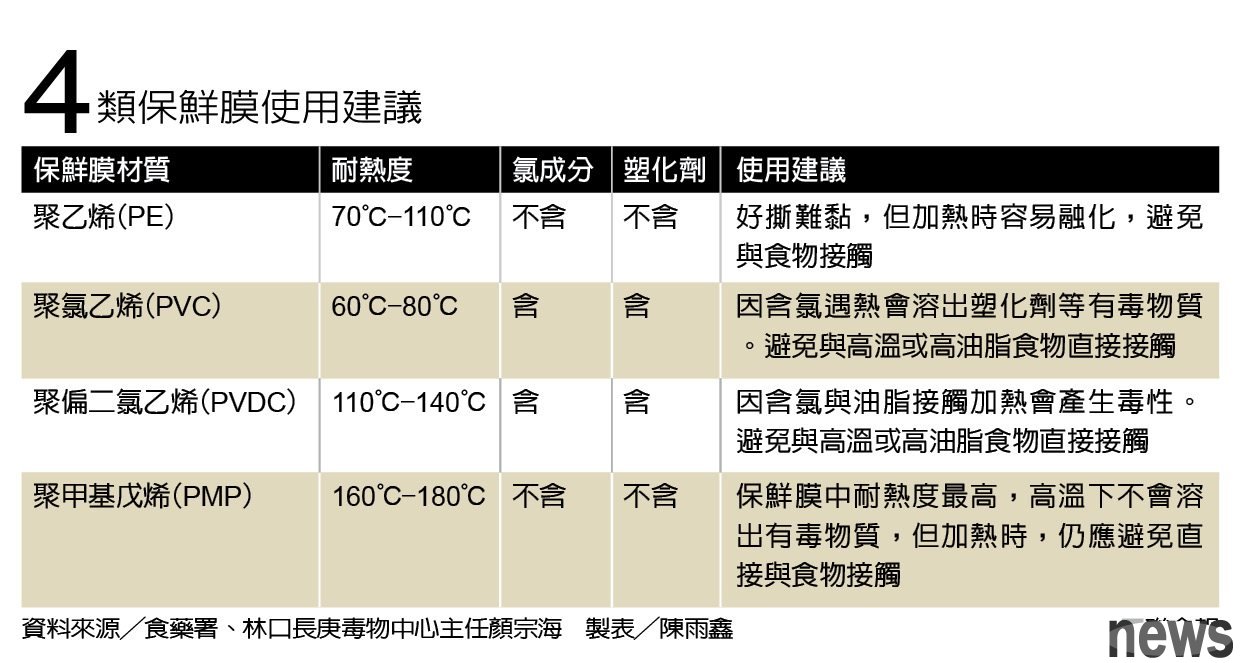Recently, food safety incidents in China have occurred frequently, including the Baolin tea room poisoning case. It is suspected that the rice noodles or pho are not preserved properly, and the rare toxin Rice Acid (Sinlubonklitic acid) has caused 4...

Recently, food safety incidents in China have occurred frequently, including the Baolin tea room poisoning case. It is suspected that the rice noodles or pho are not preserved properly, and the rare toxin Rice Acid (Sinlubonklitic acid) has caused 4 deaths. Later, food poisoning incidents such as Zangli, Wangpin Group Chuwa and Pearl.
The most common way for food preservation for Chinese people is to wrap leftovers with fresh films in the refrigerator. Yang Zonghai, director of the Toxic Center of Changgeng Hospital in Linkou, said that the fresh film is convenient and cheap, but the materials and methods should be used with extra care. If you use it incorrectly, you will give toxins to eat.
4 The heat resistance is very differentThe commercially available fresh films are divided into four types of materials, namely polyvinyl chloride (PVC), polyvinylidene chloride (PVDC), polyethylene (PE), and polymethylpentene (PMP). Yang Zonghai said that polymethylpentene (PMP) has the highest heat resistance, but it is difficult to buy fresh films of this material. At present, the most commonly used materials for fresh films are polyethylene (PE) and polyvinyl chloride (PVC). The two materials have neither high heat resistance.
Polyethylene (PE) can be divided into "low-density polyethylene" and "high-density polyethylene". The former has heat resistance temperature of only 70 degrees Celsius to 90 degrees Celsius, and the latter is 90 degrees Celsius to 110 degrees Celsius. Although most of the insulated films use high-density polyethylene, the stability of the insulated film is still lower than that of the insulated box; the heat resistance temperature of polyvinyl chloride (PVC) falls between 70 degrees Celsius and 90 degrees Celsius. The maximum heat resistance temperature of two materials, polyvinylidene chloride (PVDC) and polymethylpentene (PMP), is about 140 degrees to 180 degrees Celsius.

Jonghai pointed out that polyvinyl chloride (PVC) and polyvinylidene chloride (PVDC) have "C" as the end, indicating that "chlorine" is added. The addition of chlorine in the insulated film can help the product become soft and shaping casually, but at the same time, a large amount of plasticizers will be added to stabilize the material. These two types of materials are at high temperatures. If the food is directly wrapped in microwave ovens or electric pots to heat it, plasticizers will be produced to dye the food.
The chlorine in the insulated membrane will also cause environmental pollution. Yang Zonghai said that the insulated membrane will become garbage after use and enter the incineration furnace to incinerate. If the temperature cannot reach above 850 degrees Celsius in an instant, the chlorine-containing substance will heat up and form the "century poison" Dai Oxen.
Yong Zonghai believes that the stability of the insulated film is far lower than that of the insulated box, so no matter what material it is, it should not be wrapped in food and heated directly. Even the most heat-resistant polymethylpentene (PMP) should not be heated directly. After all, it is difficult for the public to determine whether the insulated film will produce toxic substances.
Fresh film encounters high oil and poisons are producedWhen people use fresh film, most of them wrap leftovers, and many people cook the food and directly prepare the dishes that will be served the next day. Yang Zonghai said that the freshly cooked vegetables are still high-temperature, and it is not recommended to wrap the fresh film immediately, especially dishes with "high fat", such as fried pork belly or food that is fried with high temperature, even if you use high-temperature resistant fresh film ingredients, poisons will appear when you encounter high-quality oil.
Some people are worried that after the food is wrapped in a fresh film and placed in the refrigerator to refrigerate, the fresh film will produce condensation water. If it is contaminated on the food, is it possible to stain the food? According to Jun Zonghai, there is no relevant research yet, but if the high temperature of the dish is caused by steaming moisture on the freshener membrane and then dripping onto the food, it is indeed possible that the freshener membrane will release plasticizers and other substances, and then dye the food through the moisture.
Yang Zonghai suggested that when using the insulated membrane, the time machine should wait for the food to be cooled, and the food should keep a distance from the insulated membrane and not directly contact the insulated membrane. When the food wraps the insulated membrane, it should not heat directly. These methods can prevent the insulated membrane from showing toxic substances and affecting physical health.
Fresh film use 4 points1. Do not wrap food and heat it directly
2. Fresh film then wrap the sauna film
3. Fresh film does not contact "high-fat" food
4. Don't use "chlorinated" fresh film